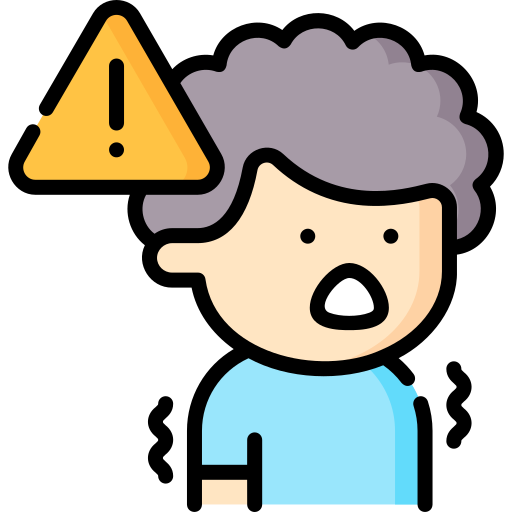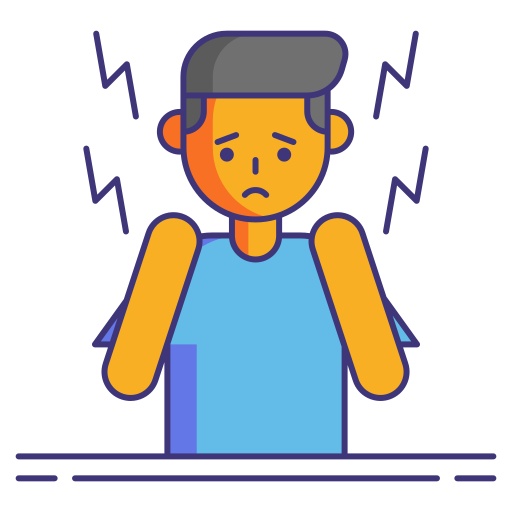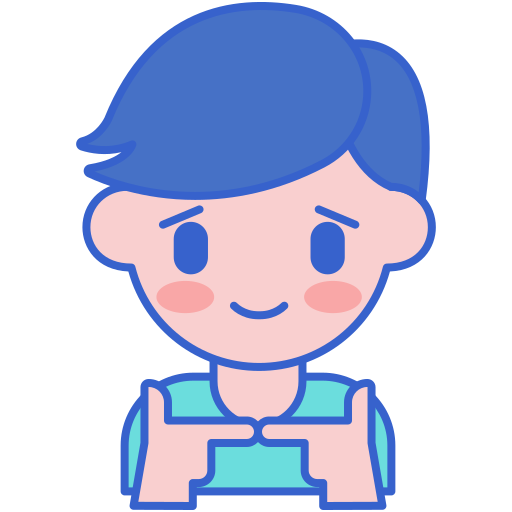Anxiety is a natural emotional response to stress or perceived danger, characterized by feelings of worry, nervousness, or fear. It is a common and often necessary response that helps individuals prepare for and react to challenging situations. Physically, anxiety can manifest through symptoms like increased heart rate, sweating, and tension. While occasional anxiety is a normal part of life, helping people stay alert and focused, it becomes concerning when it is excessive or persistent.

While nervousness can be a component of anxiety, anxiety itself is a broader and more intense emotional state that can involve significant physical and psychological symptoms.
Anxiety is not something a person can simply "snap out of" or a result of personal weakness. It often involves complex interactions of genetics, brain chemistry, and environmental factors.
People experiencing anxiety may not always show obvious signs or symptoms. They might appear calm on the outside while feeling overwhelmed internally.
Anxiety can vary greatly between individuals in terms of triggers, severity, and symptoms. One person's experience with anxiety can be vastly different from another's.
While early life experiences can contribute to anxiety, it is not solely caused by parenting. Many factors, including biological and genetic predispositions, play a role.
While some anxiety is normal, excessive, persistent, and intense anxiety that interferes with daily life is not a normal state and may indicate an anxiety disorder.
It is not about lacking willpower or self-discipline. Anxiety can affect anyone, regardless of their strength or determination.
Always Linked to a Specific Cause: Sometimes, anxiety can occur without a clear trigger or identifiable reason, which can be confusing and frustrating for those experiencing it.

Characterized by chronic, excessive worry about various aspects of daily life, such as work, health, or relationships, often without a specific cause. Symptoms may include restlessness, fatigue, difficulty concentrating, muscle tension, and sleep disturbances.

Involves recurrent, unexpected panic attacks—intense episodes of fear accompanied by physical symptoms like chest pain, heart palpitations, shortness of breath, dizziness, and abdominal discomfort. The fear of having another attack can lead to avoidance behaviors

The fear of being in situations where escape might be difficult or help unavailable during a panic attack or anxiety episode. This can lead to avoidance of places like crowded areas, open spaces, or situations that feel unsafe.

An intense fear of social situations where one may be judged, embarrassed, or scrutinized. This fear can lead to avoidance of social interactions and interfere with daily activities, such as work or school.

Excessive, irrational fear of specific objects, situations, or activities that pose little or no actual danger. Common examples include fear of heights (acrophobia), spiders (arachnophobia), or flying (aviophobia).

Excessive fear or anxiety about being separated from attachment figures, such as parents or caregivers. This disorder is most commonly seen in children but can also occur in adults.

A rare condition where a person, usually a child, is unable to speak in certain social situations despite being able to speak in other settings. This often occurs in school or public places but not at home.
Identifying whether you have an anxiety disorder involves recognizing certain symptoms and their impact on your daily life. Here are some signs and symptoms that may indicate an anxiety disorder:
Experiencing intense and uncontrollable worry or fear that is disproportionate to the situation and occurs on most days for at least six months.
These can include:
- Rapid heartbeat
- Shortness of breath
- Sweating
- Trembling or shaking
- Muscle tension or aches
- Dizziness or lightheadedness
- Nausea or stomach issues
- Fatigue
- Trouble sleeping (insomnia)
Avoiding situations or activities that might trigger anxiety, such as social interactions, public speaking, or places where one has previously experienced a panic attack.
Feeling easily agitated or frustrated, often in response to small stressors.
Trouble focusing on tasks or having a mind that "goes blank."
Feeling on edge, jittery, or unable to relax.
Sudden episodes of intense fear or discomfort that reach a peak within minutes, often accompanied by physical symptoms like chest pain, palpitations, and a sense of impending doom.
Persistent, unwanted thoughts or concerns that are difficult to control.
A pervasive sense of being overwhelmed by daily responsibilities or potential future events.
If you experience these symptoms frequently and they significantly interfere with your daily life, relationships, work, or school, it may be time to seek professional help. A mental health professional, such as a psychologist, psychiatrist, or counselor, can provide a proper diagnosis and recommend an appropriate treatment plan.
Anxiety disorders typically include symptoms such as excessive worry, physical symptoms like rapid heartbeat or shortness of breath, avoidance behaviors, irritability, difficulty concentrating, restlessness, panic attacks, intrusive thoughts, and feeling overwhelmed.
Anxiety becomes a disorder when it is persistent, excessive, and interferes with daily life. If you experience anxiety on most days for at least six months, or if it significantly affects your work, relationships, or overall well-being, you should consider seeking professional help.
Panic attacks are sudden episodes of intense fear or discomfort that reach a peak within minutes. They are often accompanied by physical symptoms like chest pain, palpitations, and a sense of impending doom. Frequent panic attacks may be a sign of an anxiety disorder, such as panic disorder.
Yes, anxiety can cause a variety of physical symptoms, including rapid heartbeat, shortness of breath, sweating, trembling, muscle tension, dizziness, nausea, fatigue, and trouble sleeping.
Avoidance behaviors involve steering clear of situations or activities that might trigger anxiety, such as social interactions or public speaking. These behaviors occur as a way to manage or reduce anxiety, but they can reinforce the anxiety over time.
Anxiety can make it difficult to focus on tasks, leading to trouble concentrating. It can also cause a mind to "go blank" during stressful situations, making it harder to remember information.
Intrusive thoughts are unwanted, persistent thoughts or concerns that are difficult to control. They are common in anxiety disorders and can contribute to feelings of distress or fear.
You should seek professional help if your anxiety symptoms are frequent, severe, and interfere with your daily life, work, or relationships. A mental health professional can provide an accurate diagnosis and recommend appropriate treatment.
Yes, self-help strategies such as mindfulness, regular exercise, a healthy diet, adequate sleep, and stress management techniques can help manage anxiety symptoms. However, if these strategies aren't sufficient, professional treatment may be necessary.
If you suspect someone is struggling with anxiety, offer support by listening without judgment, encouraging them to seek professional help, and assisting with daily tasks if needed. It's important to be patient, avoid minimizing their feelings, and respect their boundaries.

Abha Healing Foundation